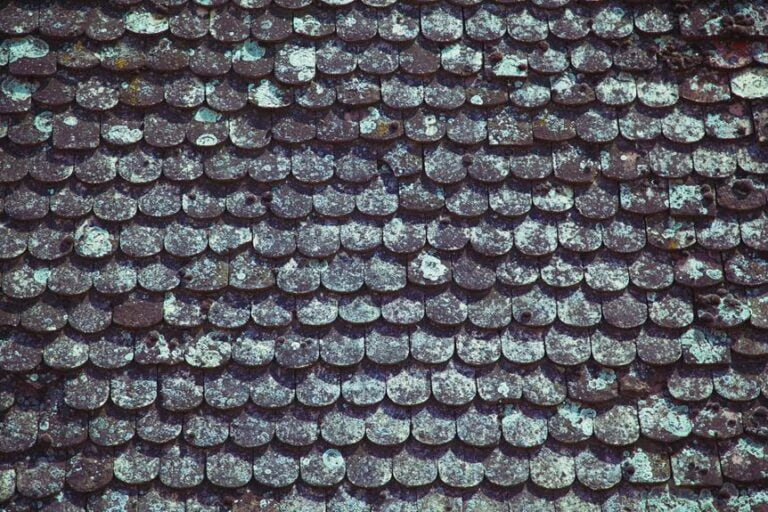Roofing insurance claims begin with an immediate notification to your insurer after damage is detected. You must thoroughly document the damage through photos, detailed inspections, and written reports to support the claim. The insurance company will then send an adjuster to assess the roof and confirm the extent of the damage. After the review, a detailed adjuster’s report is provided, outlining the cost of repairs and the insurance payout. Policyholders can negotiate with insurers if the compensation seems notably inadequate, and might consider employing a public adjuster for better advocacy. The outcome often depends significantly on the initial documentation’s precision and completeness. Further exploration could reveal additional insights on optimizing your claim.
Understanding the Roofing Insurance Claims Process
- Notify your insurance immediately after discovering roof damage to initiate the claim process.
- An insurance adjuster will assess the damage and estimate repair costs.
- Document all damage with photos and detailed reports to support your claim.
- Review the adjuster’s report to ensure it accurately reflects the extent of damage and repair costs.
- Negotiate with your insurance provider if the settlement offer does not cover all repair expenses.
Understanding Roofing Insurance Coverage
Understanding roofing insurance coverage requires a careful analysis of policy details to ensure that the coverage provisions align with the specific needs dictated by both the property location and the roof type involved. Coverage options vary widely, making it important for policyholders to discern the nuances between extensive, replacement cost, and actual cash value coverage. Each option presents a different level of protection and impacts the financial responsibility of the property owner in the event of damage. The claim process is another vital aspect, demanding precision and understanding.
It typically begins with the policyholder’s immediate notification to the insurer following damage. This initiation is followed by an assessment carried out by an insurance adjuster to evaluate the extent of damage and determine the claim’s validity based on the policy terms. Documentation plays a pivotal role here, with the requirement for detailed evidence of damage and repair estimates to support the claim.
For those valuing freedom, understanding these processes is necessary. It empowers policyholders to make informed decisions, ensuring they can independently navigate their coverage options and the claims process, thereby safeguarding their investment in their property’s roofing system.
Identifying Signs of Roof Damage
While homeowners may not always notice the subtle signs of roof damage, early detection is important to prevent minor issues from escalating into major, costly repairs. Regular roof inspections are vital for identifying these signs early and implementing timely interventions. During an inspection, a professional will look for various indicators of potential problems.
Leak detection is another crucial aspect of maintaining roof integrity. Even small leaks can indicate underlying issues that, if not addressed, can lead to significant damage and compromise the structural integrity of the home. It is vital to recognize the early signs of leakage to guarantee swift repair actions.
To aid in identifying signs of roof damage, refer to the following table:
| Sign | Implication | Action Required |
|---|---|---|
| Curled or missing shingles | Potential for leaks and structural weakness | Schedule detailed inspection |
| Stains on ceilings or walls | Indicates possible leaks | Investigate and repair leaks |
| Sagging roof sections | Structural damage or water accumulation | Immediate professional assessment |
Understanding these signs and taking prompt action not only preserves the condition of the roof but also safeguards the homeowner’s freedom from unexpected financial burdens and extensive future repairs.
Documenting Roof Damage Thoroughly
Thorough documentation of roof damage is necessary for successfully processing insurance claims and facilitating repairs. This process begins with a detailed roof inspection conducted by either a qualified roofing contractor or an insurance adjuster. During the inspection, every aspect of the roof should be examined meticulously. This includes checking for missing, cracked, or curled shingles, signs of water infiltration, and any impact damage from debris or weather events.
Photographic evidence plays an important role in claim documentation. Clear, detailed photos from multiple angles should capture the extent of the damage. These images serve as undeniable evidence that can greatly streamline the claims process. It is advisable to also include date and time stamps on these photographs to provide an accurate timeline of the damage. Accompanying the visual documentation, a written report detailing the findings from the roof inspection is essential.
This report should itemize each issue and correlate with the photographic evidence. Precise descriptions and the potential impact of damage on the roof’s integrity are key components of this document. Together, these detailed records form a strong foundation for any roof-related insurance claim, ensuring that all parties have a clear understanding of the scope of damage and necessary repairs.
Contacting Your Insurance Company
Upon gathering all necessary documentation, the next vital step is to promptly contact your insurance company to initiate the claims process. This initial contact is crucial as it sets the foundation for your claim’s trajectory. It is important to understand the insurance process and to articulate your needs clearly, ensuring that the insurer fully grasps the extent of the damage.
When contacting your insurer, meticulously verify your coverage details. This involves a careful review of your policy to confirm what damages are covered and under what conditions. Misunderstandings regarding coverage can lead to unexpected claim denials, so it is essential to clarify these points with your insurer during this preliminary phase.
Furthermore, be prepared to provide a concise overview of your claim, supported by the robust documentation you have compiled. This should include photographic evidence, detailed descriptions of the damage, and any preliminary assessments or reports by roofing professionals. These documentation tips are not merely procedural but are essential in painting a clear picture of the damage for the insurance adjuster.
Filing the Insurance Claim
After contacting your insurance provider, the next step involves formally filing your claim, which requires a methodical approach to guarantee accuracy and completeness in the submission process. The claim process is initiated by submitting a detailed form that outlines the damage, the estimated cost of repairs, and any preliminary documentation or evidence of the damage. This initial submission sets the foundation for your claim and determines the subsequent steps.
To ensure a smooth claim process, consider the following:
- Documentation: Provide thorough documentation including photos, repair estimates, and a detailed account of the damage.
- Accuracy: Double-check all forms for precision to prevent delays or claim denial due to discrepancies or incomplete information.
- Timeliness: Submit your claim promptly as delays can affect the processing time and potentially impact the outcome.
Understanding the claim process is essential, as is being aware of your appeal options should your claim face denial. In the event of claim denial, knowing the next steps is vital for addressing the decision. This might involve reviewing the reasons for denial, gathering additional supporting documents, or formally appealing the decision. Each step taken should be strategic, aimed at optimizing the result while maintaining your rights and choices throughout the process.
Preparing for the Adjuster’s Visit
Preparing for the adjuster’s visit is an important step in the insurance claims process, as it involves organizing all necessary documentation and evidence to substantiate your claim effectively. This careful preparation not only streamlines the process but also sets a clear pathway towards a successful claim settlement. Understanding adjuster expectations is essential; they anticipate detailed documentation that includes the original roofing installation or purchase records, a thorough account of the damage, and any previous maintenance records.
Photographs of the damage and reports from independent roofing experts can further strengthen your case. Additionally, it’s vital to prepare a list of questions for the adjuster, covering aspects such as the extent of coverage, procedures for estimating costs, and timelines for the claims process. This proactive approach guarantees clarity and helps manage expectations on both ends.
Reviewing the Adjuster’s Report
Once you receive the adjuster’s report, it is significant to carefully review each section to make sure all aspects of your claim are accurately represented and thoroughly evaluated. This detailed analysis is essential for guaranteeing that the adjuster’s evaluation of the roof condition aligns with the actual damage observed and that the estimated repair costs are realistic and sufficient to cover the necessary restoration work.
Key aspects to focus on include:
- Adjuster’s Evaluation: Verify that the report extensively details the current roof condition and all damage extents. This secures that nothing has been overlooked which could impact the functionality and safety of your roof.
- Estimate of Repair Costs: Scrutinize the cost breakdown provided by the adjuster. Each item listed should be justifiable and in line with current market rates for roofing repairs.
- Insurance Payout: Examine the proposed insurance payout to guarantee it aligns with the policy terms and covers the estimated repair costs adequately. This is essential to secure the financial resources needed for quality repairs.
Precise review of these elements empowers policyholders to uphold their rights and ensures that the insurance payout justly reflects the damage and needed repairs, thereby safeguarding your property and investment.
Negotiating With the Insurance Provider
As we move into the negotiation phase with your insurance provider, a thorough understanding of your policy coverage is vital. Familiarity with the specifics of your policy assists in identifying areas where the maximum claim value can be advocated for effectively. Strategic negotiation hinges on leveraging this detailed understanding to make sure all legitimate aspects of the claim are thoroughly addressed and fairly compensated.
Understand Policy Coverage
Understanding your policy’s coverage details is important when negotiating with your insurance provider to ensure all aspects of your roofing claim are thoroughly addressed. A meticulous examination of your policy helps identify coverage limitations and exclusions that are crucial to the claim process. It is essential to comprehend the scope of what is covered under your insurance policy and the specific documentation requirements needed to support your claim.
Key areas to focus on include:
- Coverage Limitations: Understand the maximum amount the policy will pay and any deductibles that apply. This will help you gauge the financial assistance you can expect for roof repairs or replacement.
- Claim Process: Familiarize yourself with the procedural steps required by your insurer. This includes timelines for filing, how inspections are conducted, and the criteria used to approve claims.
- Policy Exclusions: Be aware of what is not covered. Common exclusions can include damage from normal wear and tear or improper maintenance, which can significantly impact your claim.
Maximizing Claim Value
To maximize the value of your roofing insurance claim, effectively negotiate with your insurance provider by leveraging a detailed understanding of your policy’s coverage and exclusions. Begin by meticulously reviewing your insurance agreement to identify every potential area of coverage that applies to your specific scenario. Familiarity with the terms allows you to challenge any preliminary assessments by the insurance adjuster that may underestimate the extent or cost of damage.
Develop an all-inclusive documentation package that substantiates your claim. This should include photographs of the damage, detailed estimates from roofing professionals, and a clear statement of loss. Equipped with this evidence, approach the claim process assertively, yet professionally. Highlight discrepancies between the insurance adjuster’s report and your documentation to argue for a higher insurance payout.
Moreover, understanding the timeline and procedural nuances of the claim process can prevent unnecessary delays. Insist on regular updates from your provider and confirm that all your submitted documents are received and acknowledged. If the negotiation reaches a standstill, consider the involvement of a public adjuster or legal advisor who specializes in insurance claims to advocate on your behalf. This strategic approach guarantees that you not only protect your rights but also maximize the insurance payout for your claim.
Managing Roof Repair or Replacement
Upon initiating roof repair or replacement, it is vital to conduct a thorough assessment of the damage to confirm that all issues are accurately identified and addressed. Selecting high-quality materials is equally important, as this choice impacts the longevity and effectiveness of the roof repair, safeguarding the property against future damage. These steps are essential in managing roofing projects effectively, confirming that repairs align with insurance claim specifications and building codes.
Assessing Damage Thoroughly
A thorough assessment of roof damage is crucial to determining whether repair or replacement is the most suitable course of action. The initial step involves conducting a detailed inspection to guarantee an accurate assessment of all damage. This process not only identifies visible signs of distress but also uncovers less obvious defects that could compromise the roof’s integrity over time.
To execute this effectively, consider the following key methods:
- Visual Inspection: Conducted both from the ground and on the roof, this allows for the identification of surface damage such as cracked, missing, or torn shingles.
- Detailed Documentation: Capture photos and notes of all damage areas. This aids in the communication with insurance adjusters and contractors, ensuring that all parties are aware of the extent of damage.
- Professional Evaluation: Hiring a qualified roofing inspector or contractor can provide a deeper insight with specialized tools like moisture detectors and drones to assess hidden damages and structural issues.
Engaging these strategies guarantees that every aspect of the roof’s condition is meticulously examined, laying a solid foundation for the ensuing insurance claims process. Such precision not only streamlines the claims process but also empowers homeowners, granting them the freedom to make informed decisions based on thorough data about their property’s needs.
Choosing Quality Materials
Having completed the thorough assessment of roof damage, the next step is selecting high-quality materials that will guarantee longevity and resilience in roof repair or replacement. The choice of materials is essential, not only for securing the structural integrity of your home but also in aligning with budget considerations. Material selection should be guided by both performance and cost-effectiveness, balancing the immediate financial outlay with the long-term benefits of reduced maintenance and enhanced durability.
| Material Type | Advantages |
|---|---|
| Asphalt Shingles | Cost-effective, variety of styles |
| Metal Roofing | Longevity, weather resistance |
| Tile Roofs | Aesthetic appeal, durability |
Quality assurance and the installation process are equally important. It is essential to work with reputable suppliers and experienced contractors who adhere to high standards of installation. This ensures that the materials not only meet but exceed industry standards, providing peace of mind and freedom from future concerns. Proper installation directly influences the performance of the roofing materials, impacting everything from waterproofing to insulation. Hence, a meticulous approach to both material selection and installation is essential for a successful roof repair or replacement.
Avoiding Common Claim Mistakes
To effectively circumvent common errors in roofing insurance claims, homeowners should meticulously document all damages and maintain detailed records. This precision guarantees that during the claim process, all evidence is organized and ready for review, minimizing the risk of disputes or denials based on insufficient documentation. Understanding and strategizing the claim process with a clear approach is vital to secure the funds necessary for repairs without undue delay.
In the pursuit of a successful claim, certain pitfalls should be diligently avoided:
- Overlooking Minor Damages: Small issues can escalate into major problems. Record every detail, regardless of size.
- Delaying Claims Submission: Prompt submission avoids complications arising from worsening conditions or missed deadlines.
- Neglecting Professional Assessments: Hiring a professional to assess the damage can provide a detailed and impartial report, strengthening your claim.
Frequently Asked Questions
Can I Switch Insurance Companies After Filing a Roofing Claim?
You can switch insurance companies after filing a roofing claim, but make sure the new provider offers comparable coverage options. Analyze the implications on your claim’s processing and potential changes in policy terms meticulously.
Does a Roofing Claim Impact Future Policy Costs?
Filing a roofing claim can influence future policy costs, potentially raising premium rates at renewal due to the claim history being factored into risk assessments by insurers, impacting premium impact and future renewals.
Are DIY Roof Repairs Covered by Insurance?
DIY roof repairs typically face formidable challenges with insurance coverage, as policy limitations often exclude such home repairs due to DIY risks. Carefully review your policy to determine if your efforts are effectively covered.
How Long Does a Typical Roof Claim Process Take?
The typical roof claim process duration varies but generally takes 1-2 weeks. The claim approval timeline depends on the thoroughness of the documentation provided and the insurer’s efficiency in processing the claim.
What if My Roof Gets Damaged Again During Repairs?
If additional damages occur during repairs, you should promptly file a second claim. The insurance coverage typically encompasses these incidents, streamlining the reimbursement process for the newly sustained damages.
Conclusion
To sum up, maneuvering roofing insurance claims requires careful attention to detail and adherence to procedural protocols. An interesting statistic reveals that around 70% of homeowners’ insurance claims involve roof damage, highlighting the crucial importance of understanding insurance policies and effective claim management. Comprehensive documentation, clear communication, and strategic negotiations play crucial roles in ensuring that homeowners achieve positive results in the restoration of their properties following roof impairments.






